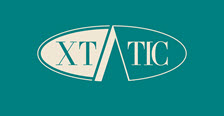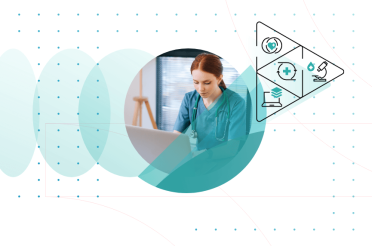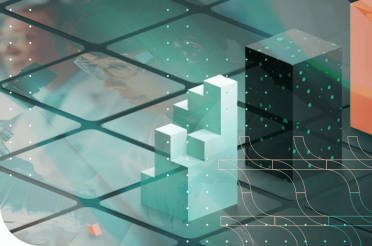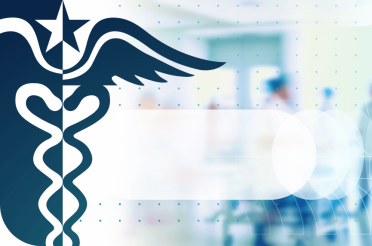Healthcare is an ever-evolving industry. Health care providers are always searching for new technologies that improve patient care, reduce medical errors, or ease day to day operations. In that field, the software can help clinics to achieve their goals.
One of the latest advancements in medical services is the introduction of health information technology (HIT). HIT is an umbrella term for systems that digitally collect, store and analyze healthcare data from multiple healthcare facilities to improve patient treatment. Health information technology and healthcare software systems increase median revenue by $49,916 per full-time physician. (1)
Here are 8 types of health information technology and healthcare software systems.
Medical practice management system
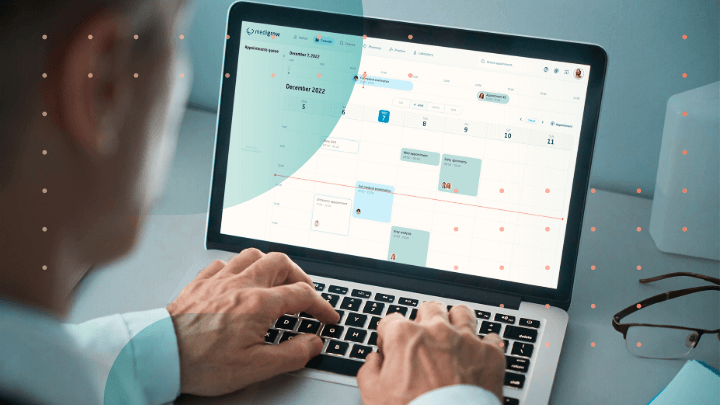
Medical practice management systems or hospital management software is a centralized system intended to handle administrative, clinical, regulatory, or financial tasks a healthcare facility might require. Handling patient engagement, medical billing, scheduling, or other day to day activities are just some functionalities the software offers.
Traditionally, healthcare professionals must spend considerable time on mundane tasks, such as scheduling, administrative tasks, patient billing, etc. The medical staff needs to maintain more than one database for basic tasks. Instead of focusing on patient care, professionals must handle administration. These tedious tasks lead to burnout, human error, and reduced efficiency.
Hospital management software streamlines data management by combining all databases in one place and automating administrative tasks. The software increases productivity and reduces errors, but it helps healthcare providers stay compliant with regulations. Healthcare professionals must only ensure their medical practice management system is compliant and not several different databases.
The main downside of implementing a central system for handling these issues is the cost of implementation and logistics. The initial investment required could be high. Installing the system and training the workers to work with it can be challenging at first as well.

Increase productivity and reduce data security and compliance errors
Get expert advice on how to implement the different types of HIT and Healthcare Software Systems solutions to transform your healthcare practice.

However, the benefits far outweigh the initial downsides as the maintenance of the system is far lower and leads to increased productivity. Generally, such a system brings in more revenue in the long term, and many healthcare providers are implementing this software already.
Electronic health records
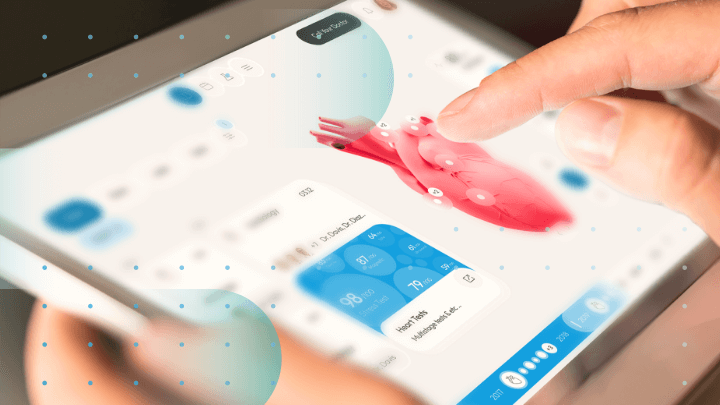
Electronic health record (EHR) also called electronic medical record is simply storage for patient data. It is a digital summary of the patient’s data created by different healthcare organizations stored in one digital space. It could include personal data, medical history, appointments, or any sort of patient information.
Of course, healthcare providers keep physical patient records. Yet, they require a lot of paper and take a lot of time to create or read. Medical professionals could sometimes even waste time finding a specific record among the thousands of physical ones.
Most importantly, necessary patient data usually is stored in several different physical records that need to be cross-examined.
A good EHR is an all-in-one storage that is cheaper to upkeep as it requires less paper and no physical storage space. It also displays health data in a clear way to patients and healthcare providers, leading to greater patient engagement. And it can be updated very quickly, reducing the likelihood of errors.
However, the potential downsides are clear – if the EHR is hacked, that could expose personal patient data. Another issue is that the records may disseminate inaccurate information if the medical professional has input the wrong patient data.
Both issues can be solved by employing software capable of withstanding hacking attempts. Technology is constantly developing new ways to fight hackers and finding ways to solve problems such as wrong input into the system.
An interesting alternative for healthcare facilities is an on-premise EHR. It is essentially a closed server that operates only on the premises of the healthcare facility and thus ensures better protection.
E-prescribing software

This software electronically generates prescriptions for patients. Patients can remotely request care or send prescription refill requests through an electronic patient portal. Doctors can then create an electronic prescription and send it to pharmacists or other public health officials.
Previously, doctors wrote prescriptions on paper. However, that creates several issues with filling out the paperwork, illegible handwritten notes, or prescription mix-ups. Errors can also occur by writing in the wrong dosages for medication, or the patient losing their prescription.
E-prescriptions eliminate the need to send patient data to a pharmacist and enable the creation of medical histories. A prescription can be directly input into a patient’s EHR and accessed by the pharmacy. AI can also detect misplaced commas in medication dosage, preventing the over or under-medication of a patient.
E-prescribing is also beneficial to the patient. People do not need to visit a healthcare facility to renew their prescriptions. The software permits patients to contact their doctor remotely.
Unfortunately, if a healthcare facility does not use good e-prescribing software, the advantages of e-prescriptions are largely mitigated. Poorly designed interfaces, drop-down menus, or auto-correct features can contribute to errors when working with the software. Bad design can impede workflow and lead to the creation of inaccurate patient information.
A healthcare organization can address these problems by educating its medical professionals to manage healthcare data. Healthcare providers can also work with companies specialized in healthcare software to ensure their e-prescription service can adapt to the relevant medical practices.
Remote patient monitoring
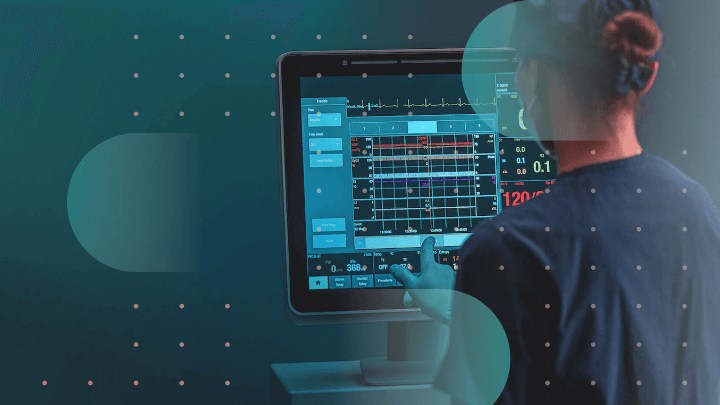
Remote patient monitoring refers to systems that track patients’ medical information outside a healthcare facility. Healthcare professionals usually track health information with wearable medical sensors.
These sensors can achieve several different things:
- Monitor blood glucose levels. Patients can carry a small sensor that measures their blood glucose levels and blood pressure and sends that information to a clinician. Since the device can connect to a phone, patients can track their biometrics and receive reminders to check their glucose levels.
- Heart-rate monitoring. Many watches or similar devices can track a person’s heart-rate throughout the day. The heart-rate of a person fluctuates frequently and some conditions are hard to detect in a hospital. Thankfully, a heart rate monitoring device tracks heart-rate continuously, even while a person sleeps.
- Depression and mood monitoring. By monitoring the heart rate, blood pressure, and other biometric data, these devices can infer information about the patient’s current mood and mental health. More advanced IoT devices can even track the movement of a person’s eyes.
- Connected contact lenses. These lenses include a camera and a sensor. They provide better vision and can monitor for early symptoms of diseases by monitoring glucose levels in tears and other metrics. Patients can also take pictures with the cameras in their lenses.
While these are simply some examples of remote patient monitoring, they highlight the main issue with on-premise treatment. Some conditions require constant monitoring, which requires a prolonged stay in a healthcare facility. Not only does this cost a lot for the patient, but it takes up space in a clinic.

Navigate the diversity of HIT and Healthcare Software Systemstalent
Simplify the remote patient monitoring and personalized care processes to enhance the efficiency of your practice with the help of our strategists.
Benefits of remote patient monitoring
Both patients and healthcare facilities can benefit from remote patient monitoring:
- Benefits for the patient: In many instances, remote monitoring removes the need for a prolonged hospital visit, enabling the patient to live a normal life. This type of monitoring is also cheaper than visiting a healthcare facility. Some diseases could even be detected by the software, prompting a hospital visit in the first place.
- Benefits for the medical industry: Based on the information received by remote monitoring devices, clinics establish patient demographics. If the health conditions of several patients worsen, hospitals can preemptively prepare more beds or take additional measures. All of which decreases the likelihood of a healthcare crisis.
Yet, the biggest concern with this technology is data security. Information systems must remain compliant with regulations such as HIPAA or GDPR and protect the personal health data of patients. Cybercriminals are always trying to exploit vulnerabilities in the software.
But even with all of this in mind, healthcare firms have already begun improving the protection of these devices. Measures such as encrypting the data, creating secure channels for the transfer of such data or constantly updating the software are just some of the protections against cybercrime.
Master patient index (MPI)
A master patient index is a system that holds a unique identifier for each patient and tracks every service provided to that patient by the healthcare facility. Each patient receives a unique identifying number (UID) and hospitals record information such as admission date and time, treatments, discharge, and everything relevant in one database.
There is no standard for identifying patients in the healthcare context in many countries. Some hospitals do not acquire the necessary demographic information about a patient or do not keep track of all the services provided to the patient. Confusion can arise if the patient has visited several healthcare facilities as each one holds a different record.
A master patient index not only creates a database for identifying a patient. Its main design is that the patient index can be shared with other healthcare providers. In this way, other clinics can easily track a patient’s medical history.
What can healthcare providers achieve by utilizing this software?
The software can improve patient outcomes by:
- Reducing the duplication of information: the software can scan for identical information between the different databases
- Finding inconsistencies between different databases: MPI can help summarize all of the different treatments in one place. Doctors can easily compare these databases and the AI can even help identify which areas should be checked
- Helping reduce input errors: The software guides medical staff into filling in the different databases.
Yet, the software is still reliant on human input. Some formatting or typing errors are persistent and lead to the misidentification of patients. This raises concerns for patient safety. If the wrong medical record is selected, the patient may receive a different treatment than what he needs.
Yet, human error occurs even more frequently when creating a patient record on paper. While a medical patient index cannot fully prevent mistakes, it can minimize them. Hopefully, as technology and AI progress, human error will be removed from the equation.
Patient portal

A patient portal is a website or application that allows patients to access their health information remotely. Through these patient portals, people can contact their physicians or seek medical or a healthcare team to ask specific questions, schedule appointments, etc.
A visit to the doctor is not always needed. Sometimes patients only have a small question or need something simple, like refilling a prescription. If these simple tasks cannot be done electronically, patients are forced to visit the clinic and the medical staff must divert their attention from other patients.
The main benefit of a patient portal is purely a logistical one. Patients save time by looking for solutions online, while medical staff can turn their attention to people who need treatment more quickly.
Features and functionalities of a patient portal
With such software, a patient can:
- Access health-related data from anywhere in the world on any electric device: A patient only needs an internet connection.
- Ask specific questions that can be answered online: Patients do not need to visit a healthcare facility for simple questions.
- Check when their physician is available: Scheduling is often the main factor delaying healthcare. People can check the schedule of their physicians and plan accordingly.
- Have conversations with a healthcare professional online.
- Schedule appointments: Patients do not need to call medical staff to schedule an appointment. This reduces the pressure on the hospital.
- Handle billing.
- Discover other services that a healthcare facility offers: Clients may not use a service, simply because they are not aware it exists.
Despite its clear benefits, this health information system still faces some problems. One of the largest is getting patients to opt in and start using the online platform in the first place. Many patients either have security concerns, don’t understand how to work with the software or have a general lack of medical knowledge.
To remedy this issue, many patient platforms develop a tutorial on how to work with the software. Medical workers can also remind patients to use the patient portal. One of the main issues is patients simply not being used to the software, but once that phase is over, the software can be very useful.
Urgent care applications
Urgent care apps are smartphone applications for remote help. In case of an emergency, these healthcare information systems notify healthcare providers. Registered medical staff are prepared to quickly respond to questions and a doctor can come to the phone for a conversation within minutes.
The main issue is that no one can predict when an emergency might occur. A person who needs urgent care or the people taking care of him usually do not know how to proceed in the case of an emergency. Sometimes as seen in the Covid pandemic, urgent care rooms can be overcrowded.
Through urgent care apps, medical professionals can instruct people or even determine whether a person needs urgent care in the first place. In some cases, a visit to the emergency room is not necessary. Professionals will have more time to treat more urgent cases.
At the very least, people can feel safer, as these apps provide 24/7 access to the healthcare system. Urgent care applications can also track medical events and help hospitals prepare responses to potential emergencies.
The issue with the applications is that they do not work without the internet. In many cases, such a connection is not available. Healthcare providers must also develop systems, not prone to unexpected failures or delayed service. Without access to quick response, these systems lose their function.
However, as 4G and 5G internet become widespread, fewer and fewer people will be left without a connection to health care. Even in places without the Internet, people can still call an emergency number. As the software develops, the system will have fewer issues, providing better patient care.
Medical billing software
Medical billing is one of the essential practice management systems. It is simply software that automates billing and handles insurance. Medical billing can either be implemented as a stand-alone system or integrated into other systems, such as the EHR of a patient.
Medical billing usually involves a lot of paperwork and administrative tasks. Individual patients may have problems paying, dispute payments, require reimbursement, etc. Insurance companies also create problems for healthcare facilities.
Medical billing software can reduce costs, by saving paper and automating tasks. The software also handles a lot of the patients can have with payment, providing a better experience. More importantly, the software can serve as proof of insurance.
Yet, some issues occur when using the software. A Medical billing system needs accurate information on all of the provided services in the first place. Sometimes patients can be billed twice for the same service. Improper coding can also lead to underbilling or overbilling.
However, these healthcare facilities solve these issues by combining several healthcare information systems. When using a master patient index and an electronic health record, clinics can minimize these issues.
The Need for a Trusted Partner
A common issue between healthcare information systems is security concerns. Hackers can exploit vulnerabilities in the system to gain access to personal patient information. If the software is not up to date, it can violate regulations.
Another issue is coding errors. Particularly in urgent care applications and billing software, bugs can be detrimental.

Whether you’re a startup, a Fortune 100 company or a government organisation, our team can deliver a solution that works for you.
BGO Software
For this reason, healthcare facilities need a good IT partner to update and maintain the software. BGO Software is among the leading companies specializing in healthcare.
